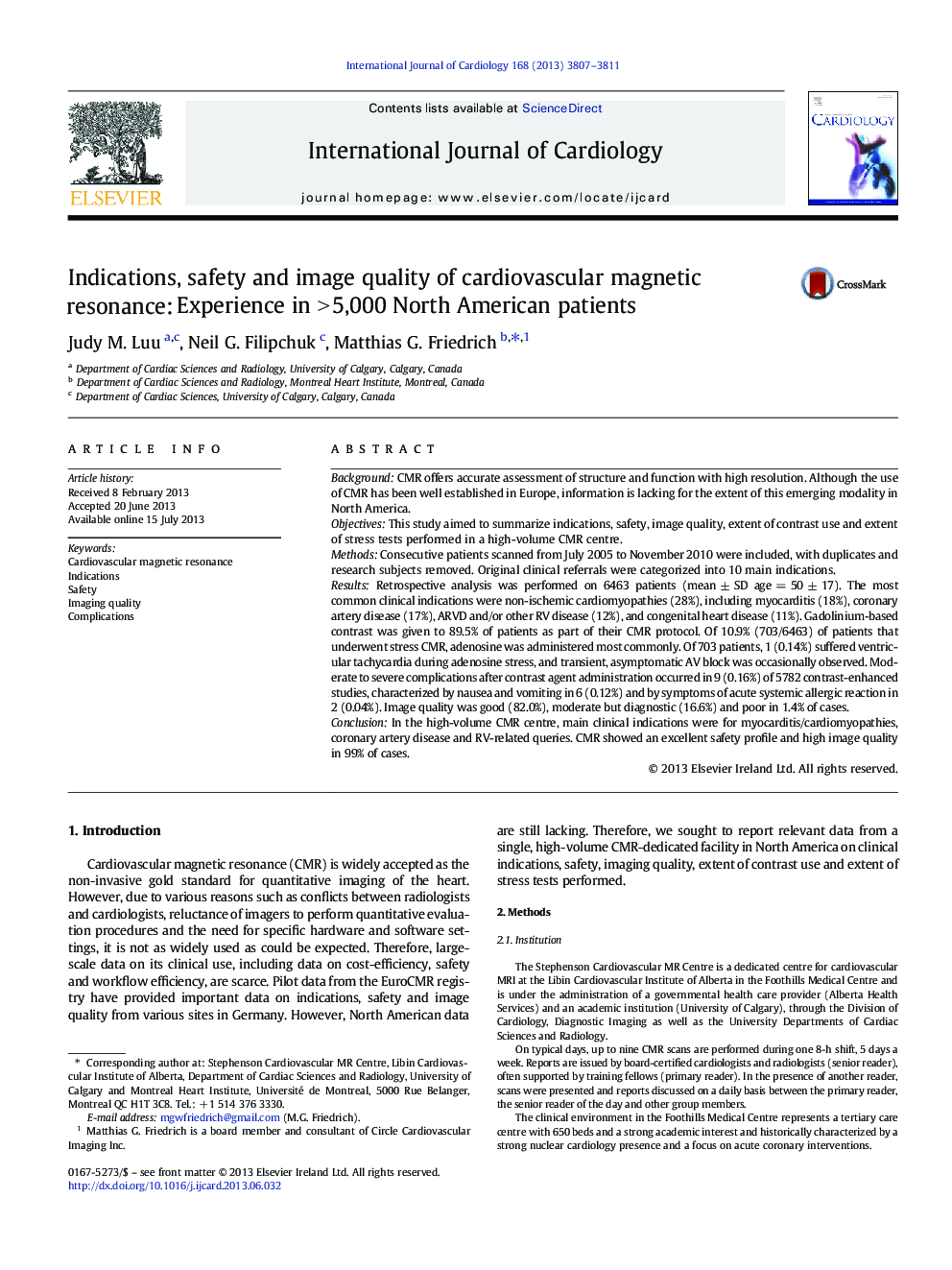| Article ID | Journal | Published Year | Pages | File Type |
|---|---|---|---|---|
| 5973918 | International Journal of Cardiology | 2013 | 5 Pages |
BackgroundCMR offers accurate assessment of structure and function with high resolution. Although the use of CMR has been well established in Europe, information is lacking for the extent of this emerging modality in North America.ObjectivesThis study aimed to summarize indications, safety, image quality, extent of contrast use and extent of stress tests performed in a high-volume CMR centre.MethodsConsecutive patients scanned from July 2005 to November 2010 were included, with duplicates and research subjects removed. Original clinical referrals were categorized into 10 main indications.ResultsRetrospective analysis was performed on 6463 patients (mean ± SD age = 50 ± 17). The most common clinical indications were non-ischemic cardiomyopathies (28%), including myocarditis (18%), coronary artery disease (17%), ARVD and/or other RV disease (12%), and congenital heart disease (11%). Gadolinium-based contrast was given to 89.5% of patients as part of their CMR protocol. Of 10.9% (703/6463) of patients that underwent stress CMR, adenosine was administered most commonly. Of 703 patients, 1 (0.14%) suffered ventricular tachycardia during adenosine stress, and transient, asymptomatic AV block was occasionally observed. Moderate to severe complications after contrast agent administration occurred in 9 (0.16%) of 5782 contrast-enhanced studies, characterized by nausea and vomiting in 6 (0.12%) and by symptoms of acute systemic allergic reaction in 2 (0.04%). Image quality was good (82.0%), moderate but diagnostic (16.6%) and poor in 1.4% of cases.ConclusionIn the high-volume CMR centre, main clinical indications were for myocarditis/cardiomyopathies, coronary artery disease and RV-related queries. CMR showed an excellent safety profile and high image quality in 99% of cases.
